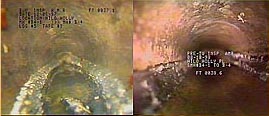Grease Removal

EPA estimates identify 75 percent of US sewer systems working at half capacity due to grease, fat and oil deposits, generated for the most part by food preparation. Just like bacon grease left to cool in a pan, grease in the pipeline solidifies into a solid form. The organic waste clogs up pipes, sewer inlets, line laterals and intersections. Backups and overflows occur. Grease builds up and clogs floats and pumps in wet wells and lift stations. Keeping lines open costs local taxpayers $25 billion per year.
The Citizens Environmental Research Council (CERC) estimates that of the nation’s 42,600 publicly and privately owned centralized sewer systems, two-thirds may experience overflows annually. The council’s research indicates that the average number of overflows per system is 50 per year, for medium-sized sewage operations serving 10,000- to 25,000-person populations. Using these estimates, at least 140,000 sewer overflows occur nationally each year. Even this number, most likely, seriously under-estimates the total size of the crisis, states the council.
Ecological damage from system failures can be equally costly. Regulators currently estimate that sewer overflows are responsible for 1.26 trillion gallons of untreated effluent flowing into the nation’s waters annually. Untreated sewage and the contaminants from these overflows can cause serious water quality problems. It can also back up into basements, causing property damage and threatening public health. Eckard Brandes Inc. has nearly 20 years of experience in grease removal and employs a full complement of industrial-grade tools for remediation.